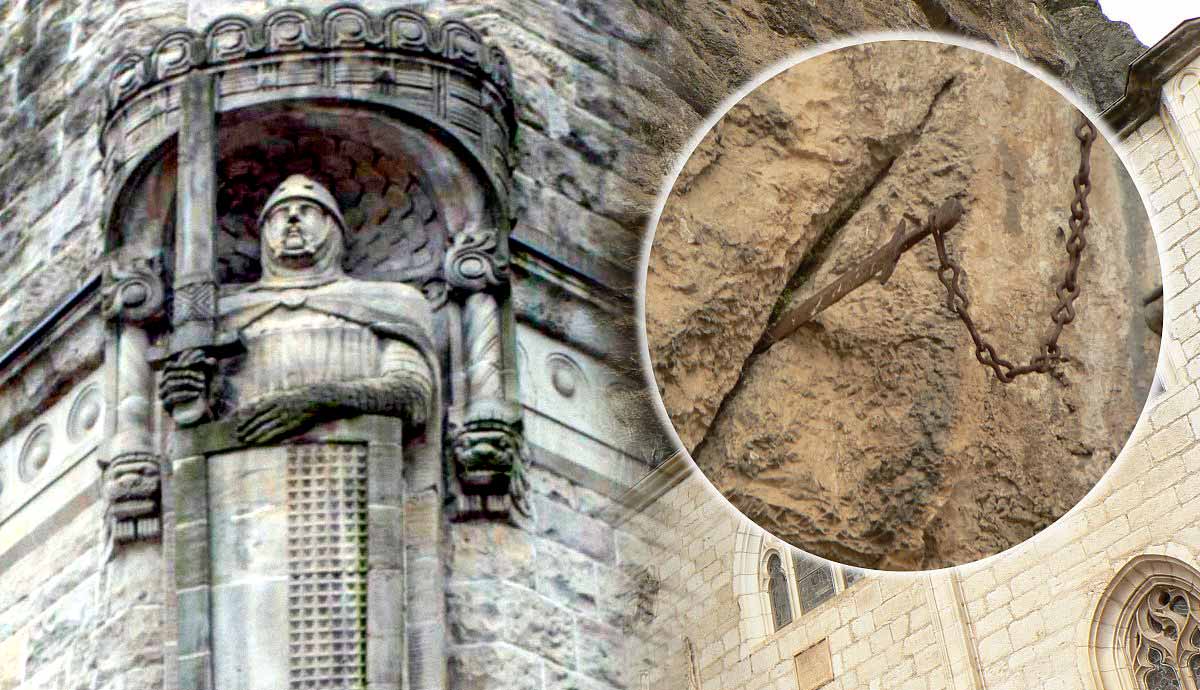In Britain, the most famous legendary sword is undoubtedly Excalibur, sometimes equated with the Sword in the Stone. In France, however, they have their own famous sword from medieval legends, sometimes referred to in Britain as the “French Excalibur.” The name of this legendary sword from France is Durendal. Numerous texts from medieval France refer to this sword, ascribing it magical powers and fanciful origins, just like King Arthur’s Excalibur. Shockingly, in June 2024, a replica of Durendal went missing from the hillside of a community that it had belonged to for many years.
Why Durendal Is the French Excalibur
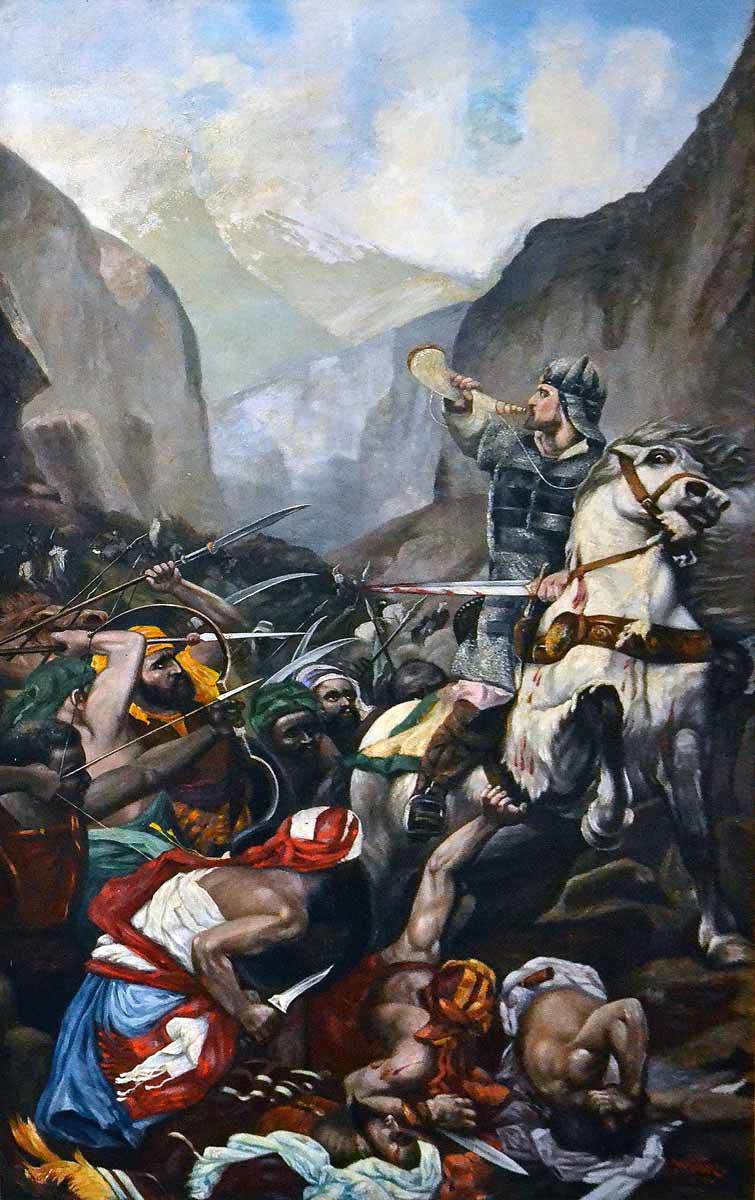 Depiction of Roland at the Battle of Roncevaux Pass, wielding Durendal, by Wolfgang von Bibra, c. 1862-1922. Source: Wikimedia Commons
Depiction of Roland at the Battle of Roncevaux Pass, wielding Durendal, by Wolfgang von Bibra, c. 1862-1922. Source: Wikimedia Commons
Firstly, why can Durendal be considered the French Excalibur? Put simply, the reason is that this is an exceptionally famous and important sword in medieval French legends, which was said to have had magical properties. As such, it occupies essentially the same role in French legends as Excalibur does in British ones.
Excalibur was the legendary sword of King Arthur, the definitive legendary king of the Britons, just as Durendal was the legendary sword of Charlemagne, the definitive king of the Franks. British legends attribute magical properties to Excalibur, such as its ability to cut through enemies far more effectively than any ordinary sword. Similarly, French legends attribute magical properties to Durendal, including the ability to cut through entire boulders with a single blow. It was also said to have been indestructible.
Even the etymology of the name is likely similar. Although there is no universal agreement, one popular etymology for “Durendal” is that it means “hard strike.” Similarly, Excalibur’s name comes from the Welsh “Caledfwlch,” meaning “hard cleft.”
Durendal in Medieval French Literature
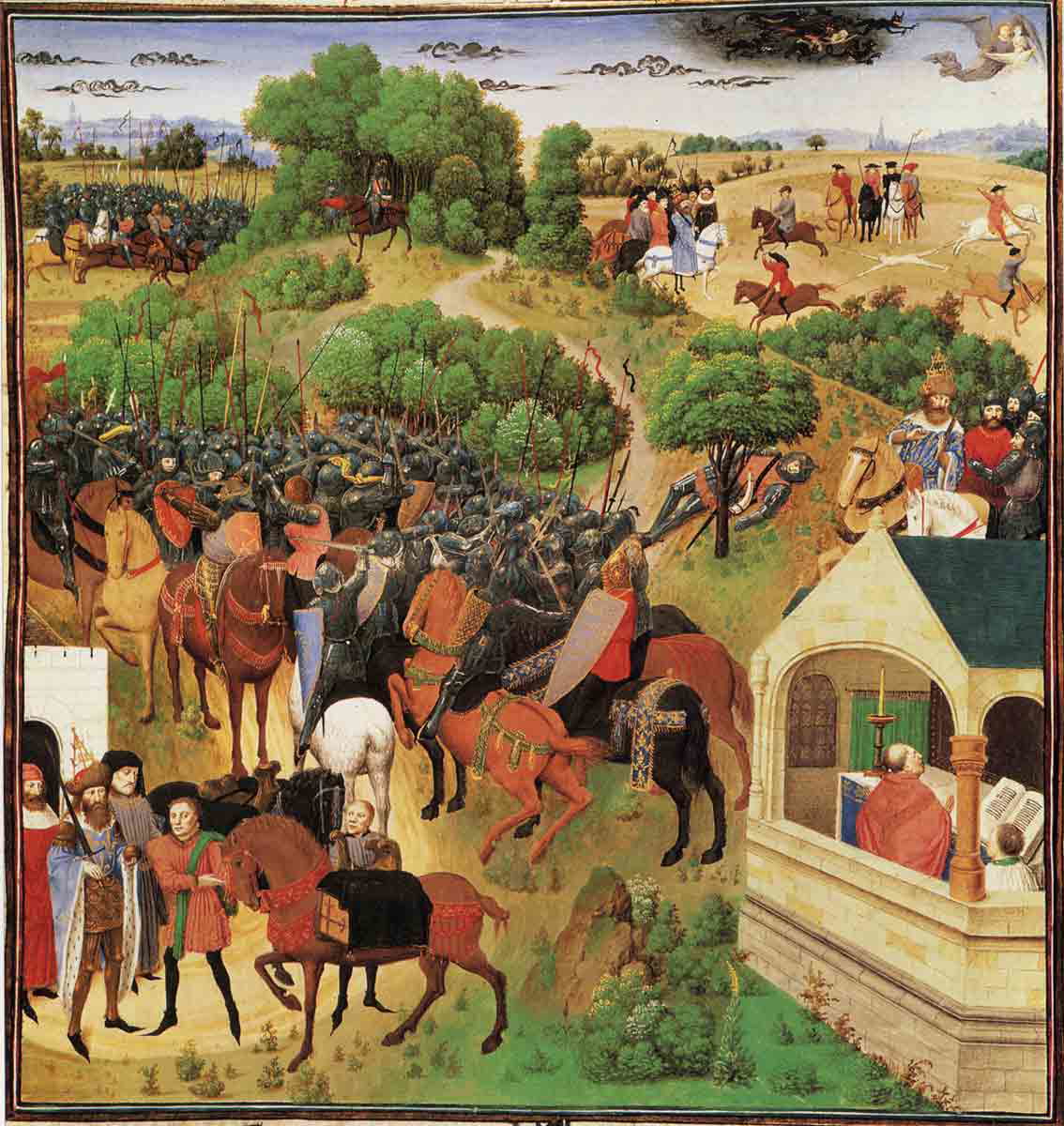 Eight Stages of the Song of Roland, by Simon Marmion from the Grandes Chroniques de France, c. 15th century. Source: Hermitage Museum, St Petersburg
Eight Stages of the Song of Roland, by Simon Marmion from the Grandes Chroniques de France, c. 15th century. Source: Hermitage Museum, St Petersburg
Durendal does not appear in any contemporary records of the reign of Charlemagne. Rather, it appears in records dating to the 11th century onwards. This was well over two centuries after Charlemagne’s lifetime, meaning that the sources we have available to us are decidedly legendary. Whether Durendal ever really existed or not, we cannot say for sure.
Nevertheless, what we do know is that Durendal appears in one of the earliest legendary accounts about the reign of Charlemagne, in a genre known as chanson de geste. This is a genre of French epic poetry that focuses on early French history. The account in question, in which the French Excalibur appears, is The Song of Roland. It tells the story of Roland, a military officer famous for his accomplishments during the reign of Charlemagne. In the story, Durendal was his sword, having been given to him by Charlemagne. For this reason, despite originally being Charlemagne’s sword, it is most firmly associated with Roland in French literature.
The Origins of Durendal
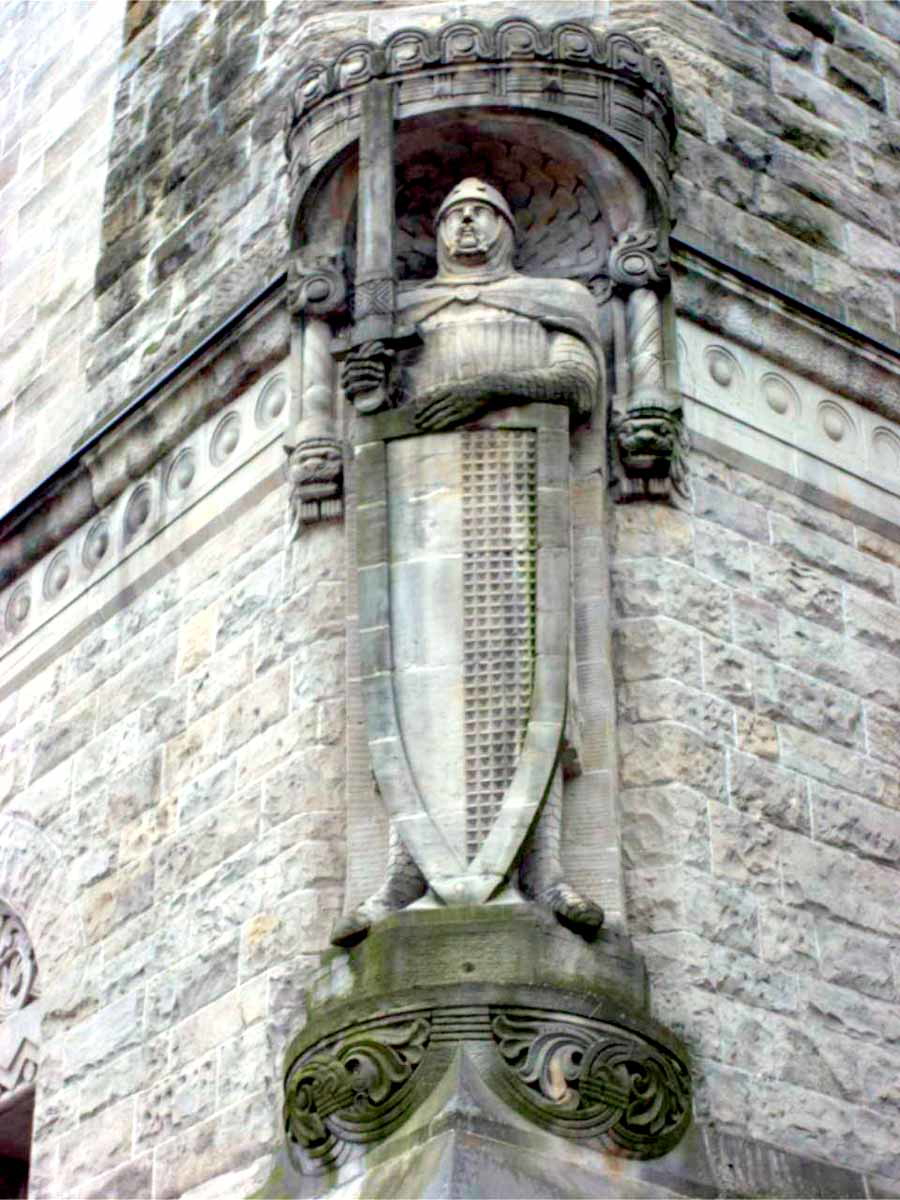 A statue of Roland holding Durendal at Metz railway station, France. Source: Wikimedia Commons
A statue of Roland holding Durendal at Metz railway station, France. Source: Wikimedia Commons
Durendal appears in numerous pieces of medieval French literature after The Song of Roland. In these, we find numerous different versions of the origin of this special sword. In fact, The Song of Roland itself also apparently presents an account of the sword’s origin. In the words of Roland himself, the account reads:
“Charles was in the valleys of Moriane when God sent word to him by an angel from heaven that he should give thee to a count and a leader. It was then that the great and noble leader girded it on me.”
This is often taken to be a reference to the origin of Durendal, implying that the angel mentioned here actually gave Charlemagne the sword. Strictly speaking, though, the text does not say that. Rather, it simply states that an angel descended from heaven and instructed Charlemagne to give the sword to a count, with the king subsequently entrusting it to his officer, Roland.
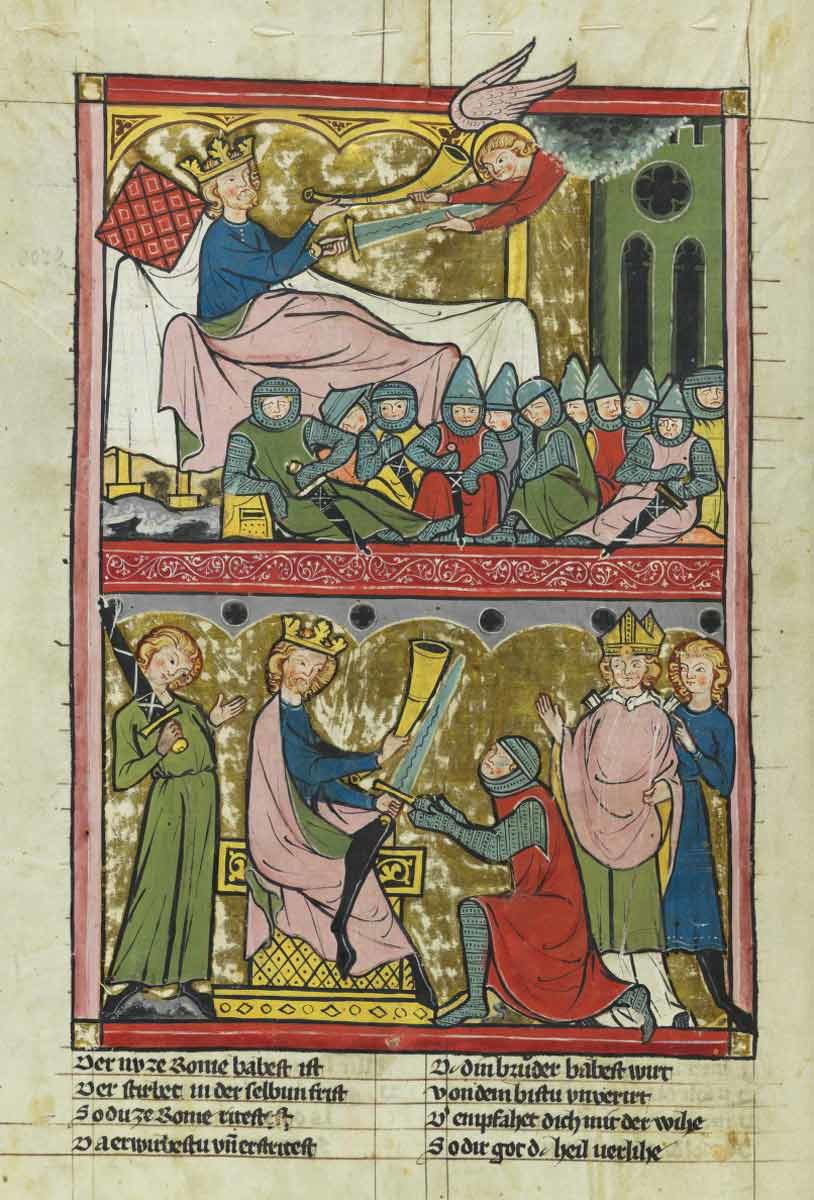 A depiction of Charlemagne receiving Durendal from an angel and giving it to Roland in Der Stricker’s Karl, VadSlg Ms. 302, fol. II_3v, c. 13th century. Source: Kantonsbibliothek, Vadianische Sammlung
A depiction of Charlemagne receiving Durendal from an angel and giving it to Roland in Der Stricker’s Karl, VadSlg Ms. 302, fol. II_3v, c. 13th century. Source: Kantonsbibliothek, Vadianische Sammlung
This could easily be interpreted to mean that the angel gave this instruction to Charlemagne concerning a sword that was already in his possession. There is nothing in the passage that requires this to have been the moment when Charlemagne first received the sword. If it does have this meaning, then the result would be that Charlemagne probably never used the sword himself, which does not seem consistent with later legends about it. However, the fact that the passage in The Song of Roland was interpreted this way is evident from Der Stricker’s Karl, a 13th-century illustrated version of The Song of Roland written in Middle High German. In an illustration, this shows the angel actually giving the sword to Charlemagne.
Later records present different origins of Durendal. Rather than giving it a heavenly origin, some medieval sources state that it was forged by Wayland the Smith, a legendary blacksmith from German mythology. Various sources claim that it was the sword of a previous king, whose identity varies depending on the source, before being obtained by Charlemagne or directly by Roland.
Roland’s Magical Sword
 Roland’s Breach in the Pyrenees. Source: Wikimedia Commons
Roland’s Breach in the Pyrenees. Source: Wikimedia Commons
Just like Britain’s Excalibur, France’s Durendal was a very special sword indeed. It was said to be indestructible and capable of cutting through entire boulders. This ties in with the local legend concerning Roland’s Breach in the Pyrenees. This is a gap some 40 meters across on the mountainside. It is said that it was cut away by Roland as he was striking the rock in an attempt to break his sword.
Being such an effective weapon, it is no surprise that Durendal is said to have contributed to Roland’s numerous victories in battle. For instance, in The Song of Roland, he remarks:
“With it I conquered proud Normandy, and Provence and Aquitaine and Lombardy and the whole of Romania: with it I conquered Bavaria and all Flanders and Burgundy and the whole of Poland… With it I have conquered many countries and lands which now belong to Charles whose beard is growing white.”
Furthermore, the hilt of Durendal was said to contain various holy relics, such as a tooth of Saint Peter and hair from Denis of Paris.
What Happened to Durendal?
 Roland à Roncevaux, by Gustave Doré, c. 1877. Source: Wikimedia Commons
Roland à Roncevaux, by Gustave Doré, c. 1877. Source: Wikimedia Commons
As we can see from the above quotation, Durendal was said to have been used by Roland to engage in numerous successful conquests on behalf of King Charlemagne. However, what ended up happening to it at the end of Roland’s career?
The Song of Roland partially tells the story of Durendal’s fate. Roland’s final battle was said to have been the Battle of Roncevaux Pass. This was a historical event of 778, in which a large army of Basques attacked the forces of Charlemagne after his invasion of the Iberian Peninsula. According to The Song of Roland, the legendary hero held back thousands of Saracen troops. However, he was mortally wounded in the process. While dying, he attempted to destroy Durendal, but it proved impossible. Therefore, he placed it under his body to hide it, to prevent it from falling into the hands of anyone unworthy.
Another tradition holds that the Archangel Michael assisted Roland in hurling the sword, which eventually landed many miles away, in Rocamadour, southwest France.
The Theft of Durendal in 2024
 The replica of Durendal at Rocamadour, wedged in the rock between two buildings. Source: Wikimedia Commons
The replica of Durendal at Rocamadour, wedged in the rock between two buildings. Source: Wikimedia Commons
In Rocamadour, it was said to have been placed in the local chapel of Saint Mary. After approximately 200 years, at about the same time as the composition of The Song of Roland, Henry the Young King was said to have stolen it in 1183.
A replica of Durendal has long been seen firmly wedged into a crack on the rock face between two buildings in Rocamadour, approximately 30 feet above the ground. A short metal chain provided extra security, with one end attached to the sword and the other end affixed to the rock face. It is believed that it was placed there in the 1780s as a way of boosting tourism.
Unfortunately, after nightfall on June 21, 2024, this famous replica of France’s Excalibur vanished. Someone had stolen it. The event was viewed locally as a tragedy, given the cultural importance of the sword, and a police investigation was opened. Despite their efforts, it has still not been returned to its place.
The Missing French Excalibur
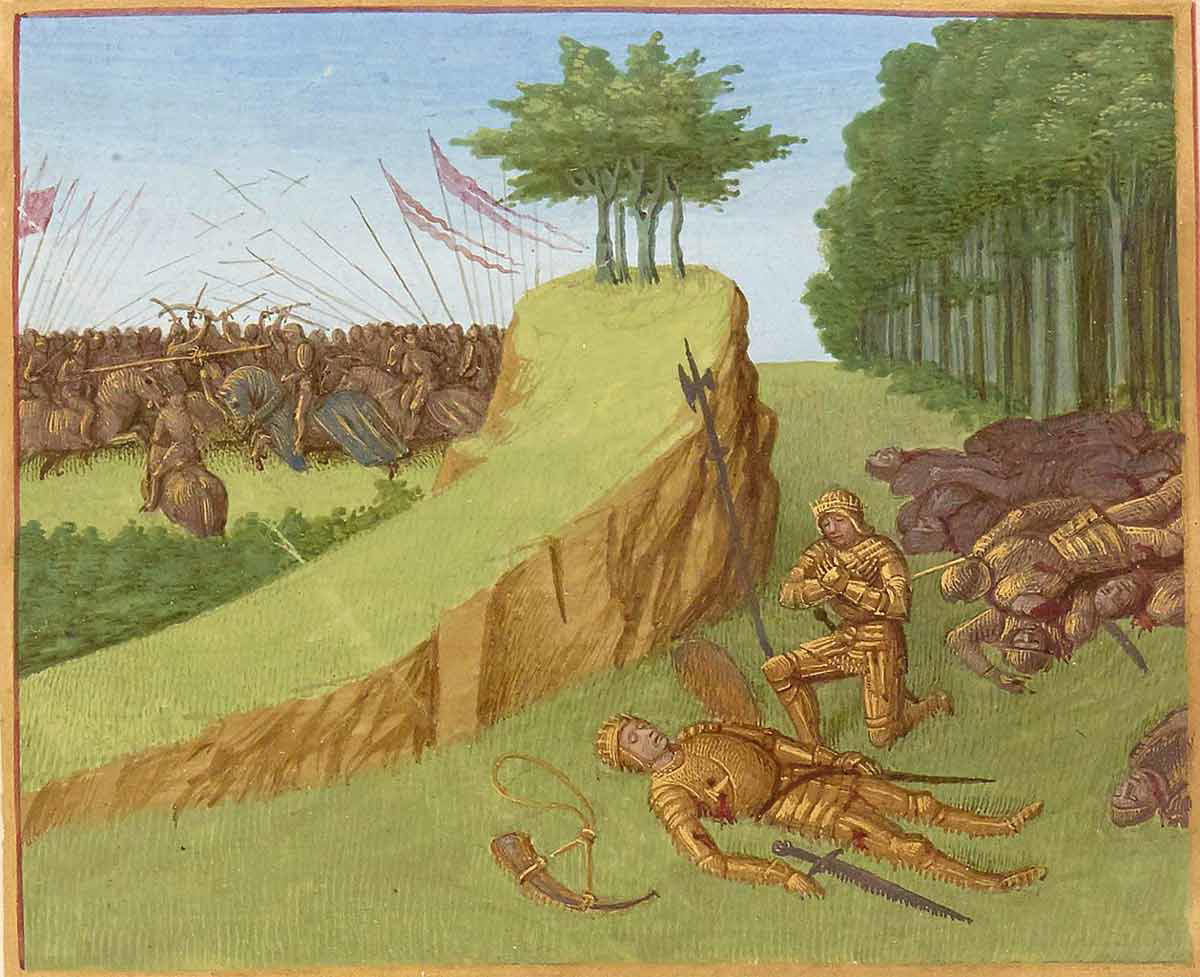 The Death of Roland, by Jean Fouquet, c. 1455. Source: Wikimedia Commons
The Death of Roland, by Jean Fouquet, c. 1455. Source: Wikimedia Commons
In conclusion, Durendal is the French equivalent of Britain’s Excalibur in many ways. They are both famous swords that feature prominently in medieval legends. Both are said to have possessed magical properties and were used, at least for a time, by the most famous king from the legends of their respective countries. Durendal is said to have been given to Charlemagne by an angel, and he subsequently gave it to Roland. After conquering numerous lands with Durendal, Roland made his final stand at the Battle of Roncevaux Pass. After being mortally wounded there, one tradition holds that he threw it all the way to Rocamadour.
A replica of the sword was wedged into the rock face between two buildings in Rocamadour, possibly as early as the 1780s, and became a famous sight for tourists. Unfortunately and inexplicably, France’s Excalibur was stolen in 2024 and has still not been recovered.
